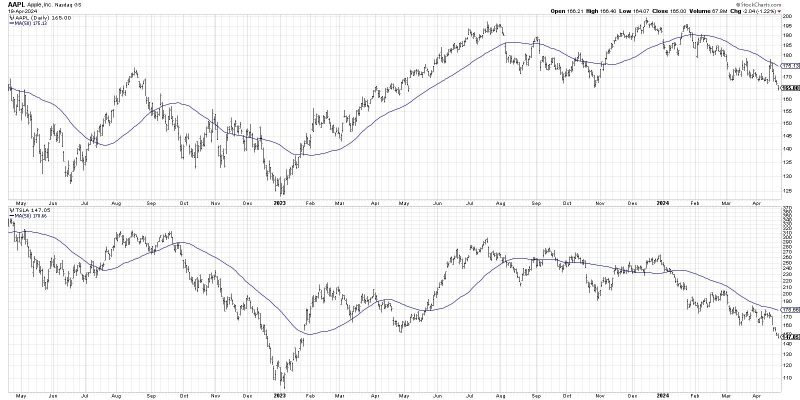In the realm of finance and investing, the recent breakdown in mega-cap growth stocks has confirmed a bear phase that has sent ripples through the market. This sharp decline in high-flying tech and growth stocks has caught the attention of investors and analysts alike, leading to speculation about what this could mean for the broader market and the economy as a whole.
The underperformance of mega-cap growth stocks, which have been leading the market higher in recent years, is seen as a significant shift in sentiment and investor preferences. These stocks, which include major players like Apple, Amazon, and Microsoft, have been the darlings of Wall Street, driving much of the market gains in the past decade. However, the recent weakness in these stocks has raised concerns about the sustainability of the market rally and the resilience of these once high-flying companies.
One of the primary reasons behind the decline in mega-cap growth stocks is the rising interest rates and inflation expectations. As interest rates creep higher and inflation fears mount, investors are reassessing their portfolios and rotating out of high-growth, high-valuation stocks in favor of more defensive sectors like utilities, consumer staples, and healthcare. This rotation has put pressure on mega-cap growth stocks, leading to significant declines in their share prices.
Moreover, concerns about regulatory scrutiny and antitrust measures have also weighed on mega-cap tech stocks. Companies like Facebook and Google have come under increasing scrutiny from lawmakers and regulators over their market dominance and business practices, which has added another layer of uncertainty for investors. This regulatory risk has further dampened the outlook for mega-cap growth stocks and contributed to their recent underperformance.
Another factor contributing to the bearish sentiment surrounding mega-cap growth stocks is the stretched valuations. These stocks have been trading at historically high multiples for quite some time, leading many investors to question whether they are overvalued and due for a correction. The recent pullback in these stocks suggests that investors are becoming more discerning and selective in their investment decisions, favoring companies with more reasonable valuations and solid fundamentals.
As mega-cap growth stocks continue to struggle, investors are faced with the challenge of navigating a more uncertain and volatile market environment. While the recent pullback may present buying opportunities for some investors, others may choose to stay on the sidelines and wait for more clarity on the market direction. In any case, the breakdown in mega-cap growth stocks serves as a stark reminder of the cyclical nature of the market and the importance of diversification and risk management in building a resilient investment portfolio.
In conclusion, the recent breakdown in mega-cap growth stocks confirms a bear phase that has implications for the broader market and investor sentiment. Rising interest rates, regulatory scrutiny, stretched valuations, and shifting investor preferences have all contributed to the underperformance of these once high-flying stocks. As investors adjust their portfolios and reevaluate their strategies, the market landscape is likely to remain turbulent and challenging in the near term. It is essential for investors to stay informed, vigilant, and adaptable in order to navigate these uncertain times successfully.
